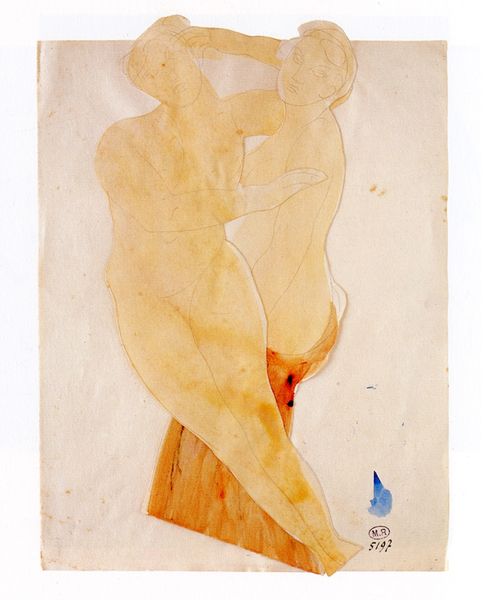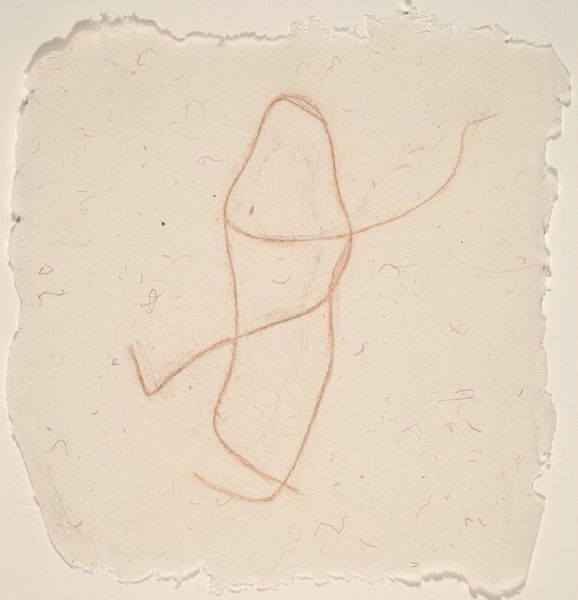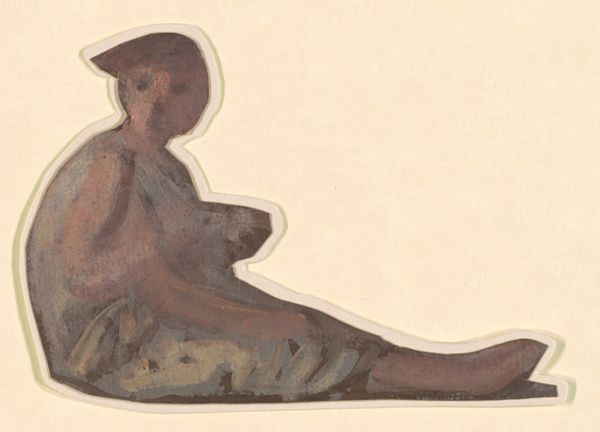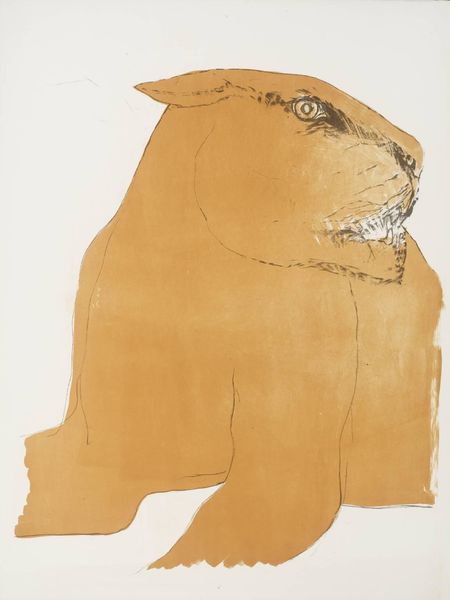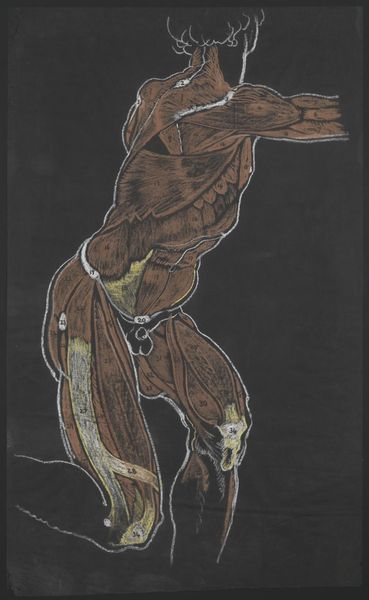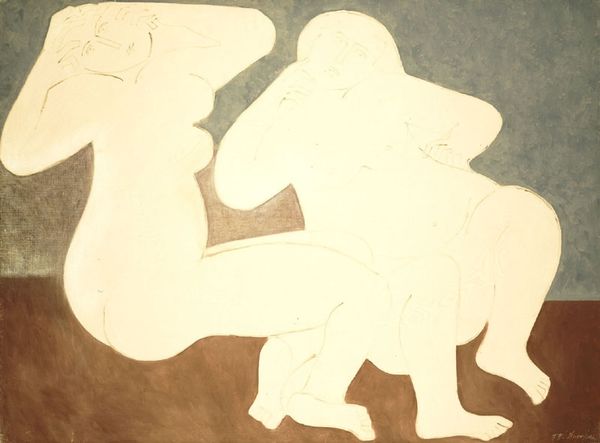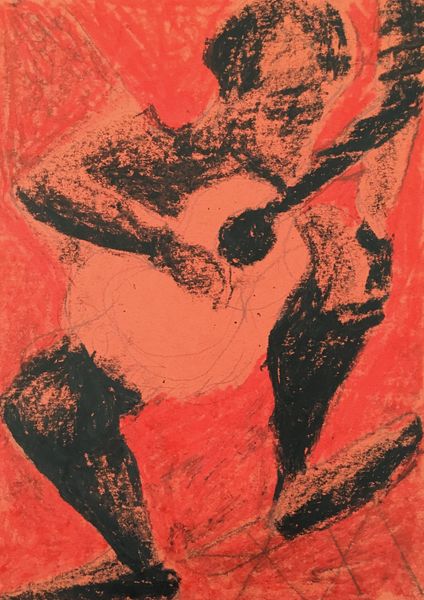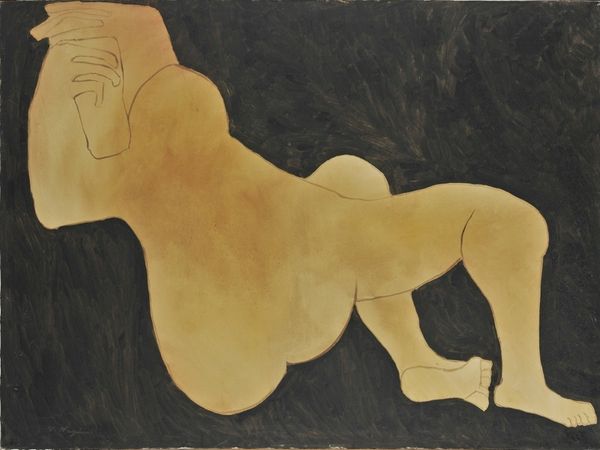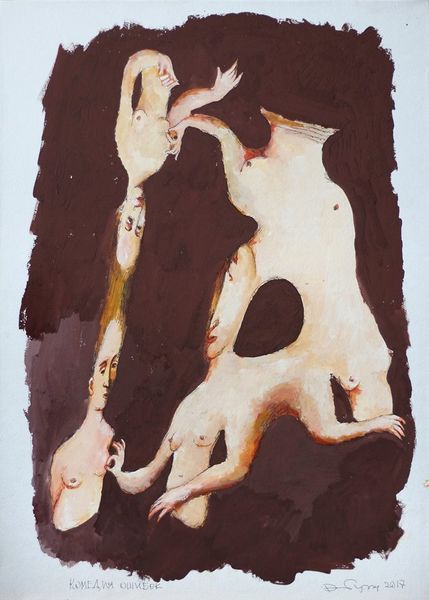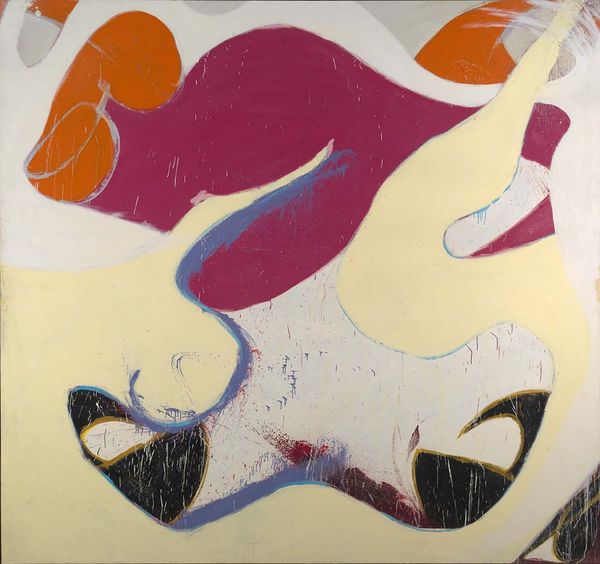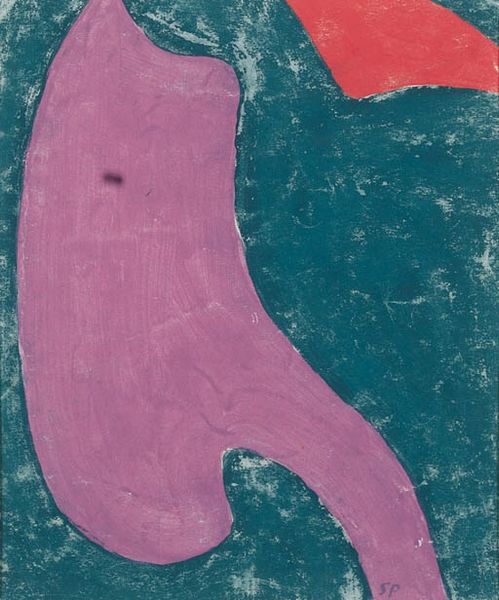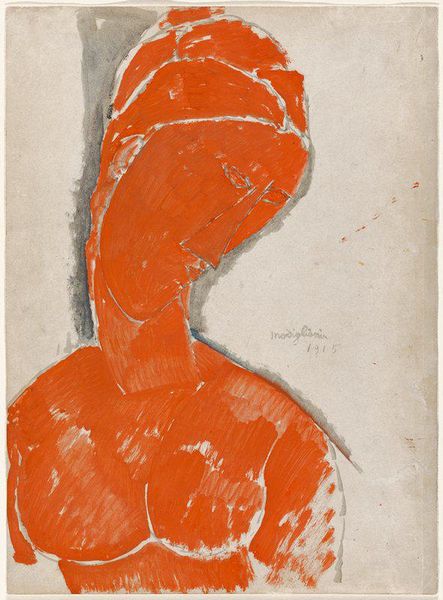
Dimensions: support: 301 x 227 mm
Copyright: © ADAGP, Paris and DACS, London 2014 | CC-BY-NC-ND 4.0 DEED, Photo: Tate
Curator: Henri Laurens, born in 1885, created this piece titled "Seated Woman." Editor: The first thing that strikes me is the vulnerability; that huddled posture, the averted gaze. It suggests contemplation, perhaps even a touch of melancholy. Curator: Considering the limited information, we must rely on broader feminist and historical contexts. How does this depiction resonate with representations of women in art history, either reinforcing or subverting prevailing narratives of the time? Editor: Absolutely. The simplified lines and earthy tones evoke primal fertility figures, almost like a contemporary interpretation of a Paleolithic Venus. The circles for the breasts, the smooth planes – it reduces the figure to its essence. Curator: Precisely, stripping away the superfluous and focusing on the foundational aspects of identity and form. Laurens encourages us to consider the essence of womanhood and its socio-political meanings. Editor: Yes, there’s a timeless quality. It's not about a specific individual, but a universal representation of the feminine spirit. Curator: A powerful interplay between form and social significance. Editor: Indeed, a resonant dialogue between the figure and the symbols it embodies.
Comments
Join the conversation
Join millions of artists and users on Artera today and experience the ultimate creative platform.
tate 7 months ago
⋮
Seated Woman was made in Paris at a time when Laurens was beginning to move away from the Cubist style which had characterised his work between 1915-18 towards a more classical idiom. This change can be seen as part of the widespread movement among artists working in Paris in the late 1910s and early 1920s, away from the fragmentation of Cubism towards more naturalistic forms. This so-called 'rappel à l'ordre' ('return to order') has often been interpreted in terms of a desire for stability and tradition after the disruption and chaos of the First World War (see On Classic Ground, pp.11-30). The earthy red gouache and inscribed lines of Seated Woman recall the decoration of ancient Greek and Roman pots. In addition, the pose of the woman is close to that used by Laurens in a series of sculptures of crouching women which allude to the structure of caryatids, pillars in the form of a female figures found in ancient Greek and Roman architecture (see Hofmann, pp.110-32). Laurens' friend Amedeo Modigliani (1884-1920) also made a number of works at this time based on caryatid forms (see Tate T00149 and T03570). Commenting on the renewed authority given to ancient Greek and Roman art by a number of artists working in France and Italy in the 1910s and 20s, the art historian Elizabeth Cowling has argued that 'ever since the Romantic period primitivism had been associated with an avant-garde position - with the idea of purity and authenticity and the escape from the supposed decadence and over-sophistication of the present. The myth of the purity of the primitive has been the great myth of modern times, and indeed all the classical revivals that have occurred from the time of Wincklemann onwards have been intimately bound up with this ideal, for the return to the classical past is conceived as return to origins.' (Cowling, p.25.) Further Reading:
